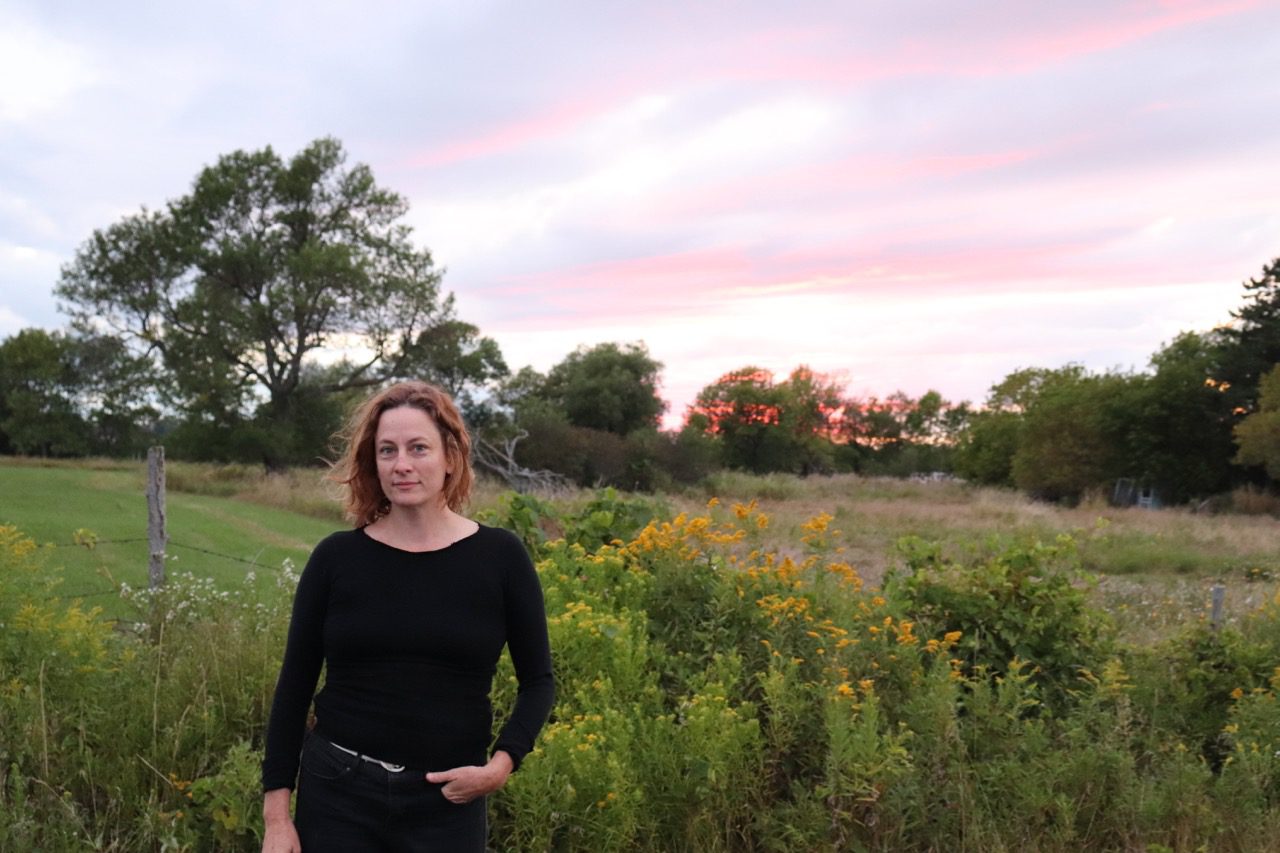SPOTLIGHT: Sarah Harmer on Spring and New Beginnings

Photo by Virginia Clark
EDITOR’S NOTE: Sarah Harmer is No Depression’s Spotlight artist for February. Her new album, Are You Gone, her first in 10 years, is out today. Read our feature story about Harmer here.
Mid-February means long johns and bundles of firewood. Sunlight staying a little longer in the sky, and thoughts of spring and leafy green tips that will eventually fill the forest. It means sitting at the kitchen table with a tree nursery catalog, imagining future groves and new roots that will hold floodplain soils from washing into the lake. On this northeastern edge of Lake Ontario the only predictable planning I seem to do in my life takes place at this time every year. I pore through tree and seed catalog; make lists, notes, and maps; and a couple weeks later send a check and an order form to my favorite tree farm, tucked into the Canadian Shield north of here. I’ll wait then, until the end of April, to borrow a truck and drive for an hour along country roads to pick up the bare root saplings, each tied with a string and a nametag, with roots wrapped in damp sawdust and shredded newspaper. Butternut, honey locust, chokeberry, highbush cranberry, all coming home with me.

In the first line of “Little Frogs” I sing about “pink fingerlings,” potatoes I grew from a small shipment of wizened-up tubers that arrived to the mailbox for spring planting a few years ago. I buried them in small trenches and they were “dug up and drying on the floor” that fall, rare enough to be written on a list of summer memories that I came across awhile later. Over the past few years vegetable seeds have taken a back seat to trees.
I’ve been planting, pruning, and cutting down trees on a small handful of acres in Eastern Ontario for over 20 years. Quakers initially settled this crook of the creek in the early 1800s, newly arrived in Canada from New Jersey and loyal to the British Crown. The invasive European buckthorn tree, a small but hardy tree that perhaps they once planted, gets most of my aggressive attention. It was a new arrival to North America in the later 1800s and was apparently planted as a hedge to keep livestock in, or out. Clearing small sections of the old forest choked with this prolific and toxic newcomer with my ratchet loppers is more satisfying than I may want to admit. Seeing small bur oak and black cherry saplings jumping in growth with new access to sunlight is a true joy. Some might ask, “What have you been doing since your last album came out a decade ago?” and I might answer, “Pruning the forest?”
The creek that comes through the woods here ran a sawmill more than 150 years ago, at least while the water ran, which now tends to be for about half of the year, depending on snow and rainfall. Things have been wet for the past few years, summers of downpours following long, oppressive droughts. As scientists have been telling us, volatility is more than ever par for the course as we burn fossil fuels and rattle our planet’s climate.
In the past two years I have been able to help realize a dream that has me considering new landscapes and tree species. A dear friend and I have been able to help conserve some incredible grassland habitat on an island in the middle of Lake Ontario. This place has a long agricultural past and has been recognized as an important bird area, with healthy populations of grassland birds like bobolink and meadowlark, and abundant shorebirds like sandpipers, plovers, and trumpeter swans. High over the fields hawks hunt voles and rabbits, and eagles and osprey regularly hover over the water looking for a shore lunch. My friend has been renting the farmhouse on the hundred-acre farm here and has lived primarily on its back porch for the past 25 glorious summers. Her fear all this time has been that the family, who bought the place in 1930s as a place to hunt deer and ducks, would sell to a developer that would build a road and housing lots across the precious grassy peninsula. A few years ago I was able to introduce this incredible land to an acquaintance at a national conservation organization. The organization found that the biological diversity was valuable enough to justify purchasing the land in order to protect the endangered habitat in perpetuity. As of this month the bulk of the land will be put into conservation.
An unexpected development is that we’ve been able to retain a few acres to pursue some conservation goals of our own. This includes planting some of the lowland floodplain in water-loving trees like sycamore, eastern cottonwood, marsh oak, and black maple in order to hopefully slow soil erosion along the shoreline. Historic high water levels in the Great Lakes have increased erosion in the past few years, with strong winds and waves bashing the coasts. Drainage ditches are also an aspect of the property, carrying potential chemical and fertilizer runoff from nearby soybean and corn fields. Deer resistant, pollinator-loving shrubs like St. John’s wort, red osier dogwood, and chokeberry are on the list to slow the runoff and help keep pollutants out of the lake.
Over the past year we’ve planted dozens of trees, with an eye to prioritizing grassland habitat for birds while increasing tree cover and shading along the waterways. We want to plant native trees and shrubs that have a long history in this area so that birds, butterflies, and insects who have developed unique relationships with them over the years will thrive. You may hear a few references to plants and animals on my new album, Are You Gone, and all of this planning and planting may be why.





